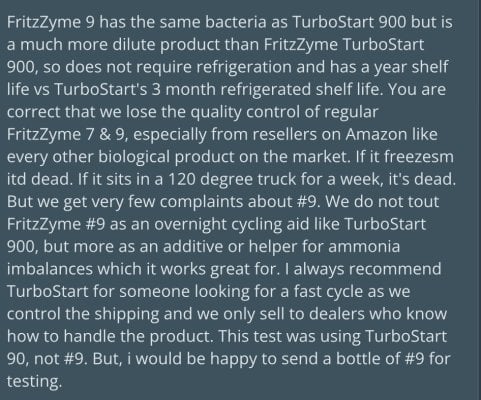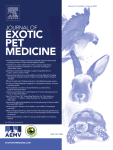- Joined
- May 22, 2016
- Messages
- 6,565
- Reaction score
- 10,146
What's your idea about them being different - in some way other than just more cells/mL?Fritz 900 says it is basically Fritz 9, but 15x more concentrated, but the preference for it to be stored refrigerated throws me off. I have a bit of a theory as to the refrigeration thing - possibly something to do with just slowing down metabolism versus actual dormancy, but am not quite sure.
Are you thinking that the shelf-stable vs refrigeration is pointing to some notable difference other than just concentration?
This is one reason I centrifuge them and pour off the media - I don't trust a dark colored smelly media as being chemically inert. There could be a lot of carbon source in there, which could make nitrification harder to recognize. My guess is that many cells/mL without preservatives - the refrigeration just slows decomposition and protects the bacteria from decomposition and byproducts.




















